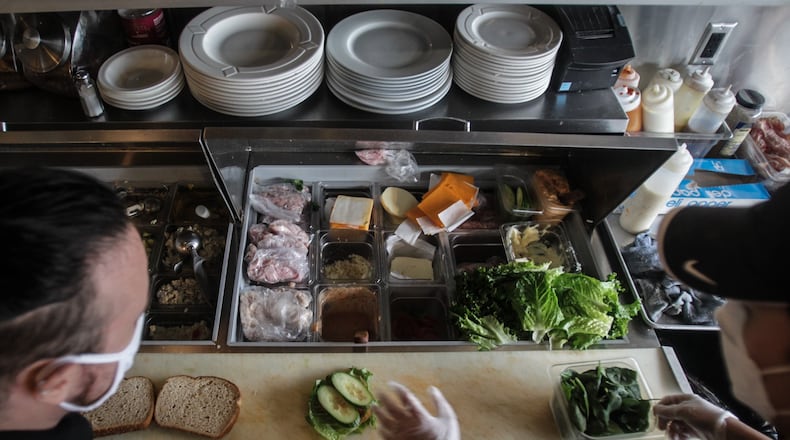“It was already pretty hard, because we were hit pretty by the shutdowns and all that,” Lee said. “Some beef prices went from $4 to $11 per pound. We were already experiencing about 40% to 50% less sales and at the same time meat prices went up like crazy... it was one of the most difficult times.”
Overall food prices were up around 3.3% in 2020, compared to less than 2% in 2019 and 2018, according to the United States Department of Agriculture.
Meat prices rose by nearly 10%. Retail meat prices have been slow to decline following the highs reached at the onset of COVID-19, the USDA said.
Some categories of meat have continued to see monthly declines in prices; like beef and veal, which decreased 1.4% from August to September, 0.3% from September to October and 0.1% from October to November. Other meat categories have had both decreases and increases in price, like pork, which increased 0.9% from September to October and decreased 1.6% from October to November, according to the USDA.
“Some items were nearly impossible to get with the high price of everything,” Lee said.
Lee said the deli found different suppliers for out of stock items because they didn’t want to increase the prices of their menu and put the increased meat prices onto their customers.
Lee said along with meat prices, the prices for cleaning supplies and vinyl gloves went up. The price for a case of vinyl gloves that the restaurant uses daily climbed to $120 at one point, he said. That is nearly four times the normal price Flyboy’s paid for the gloves before the pandemic.
To go boxes, hand sanitizer, masks and wipes were also hard to find in 2020.
Mark Jacobs, a supply management professor at the University of Dayton, said food prices are always volatile, but there was a unique mix of factors in 2020 that caused them to fluctuate like they did.
“Food prices are volatile all the time, the pandemic has exacerbated that to some degree,” Jacobs said.
At the beginning of the pandemic, when the large majority of restaurant dining was shut down, Jacobs said there was a shift from dining in restaurants to dining at home. This caused some restaurants to buy fewer items. Large suppliers, like Gordon Food Service and Cisco, had food “stuck” in the pipeline so prices dropped.
Then there was panic buying of what Jacobs called seemingly random things drove up prices of items like meat, toilet paper and cleaning supplies.
Meat packing plants closed because of coronavirus outbreaks in the plants, the California wildfires and drought had an impact on the number of animals available for slaughter. there was a trade war with China, which majorly impacted soybeans, but had ripple effects across the food supply chain.
“We are interconnected from a commerce standpoint, but we’re also interconnected from an individual standpoint,” Jacobs said. “And we all need each other. That restaurant operator, it does them no good unless they can have customers. And the customers can’t patronize the restaurant unless they have jobs. And it just goes on and on and on.”
Joe Bavaro, owner of the Oregon Express in the Oregon District, said his restaurant hasn’t had trouble when buying their inventory.
“We’ve been pretty lucky in that sense,” Bavaro said. “We haven’t run out of anything.
In the beginning of the pandemic, much like people shopping for their own homes, the Oregon Express couldn’t find any Clorox wipes. Now things are back to the “new normal,” and the restaurant is able to buy the wipes.
“Somehow people have found a way to get back to normal,” he said.
Although the restaurant and bar has been able to get everything they need, Bavaro said food prices have been all over the place.
“Prices have been up and down like a roller coaster,” Bavaro said.
Bavaro said the Oregon Express is now buying wrapped straws and buying many more takeout containers and cardboard pizza boxes than before 2020, but is able to get those items regularly.
Lee at Flyboy’s said the deli is experiencing about a quarter fewer sales than before the pandemic started. Flyboy’s has set up DoorDash and other online pick up services, which Lee said has helped the restaurant.
“Right now we’re very fortunate to be staying alive and staying open,” Lee said. “If you’re okay supporting local, please do it. Hopefully more restaurants and bars can survive if we do that.”
Jacobs expects food prices to continue to fluctuate in 2021, but not so dramatically.
“There is volatility all the time; the coronavirus just amplified it the past nine months,” Jacobs said. “The volatility will continue (in 2021), but the swings are likely to be less extreme.”
About the Author

